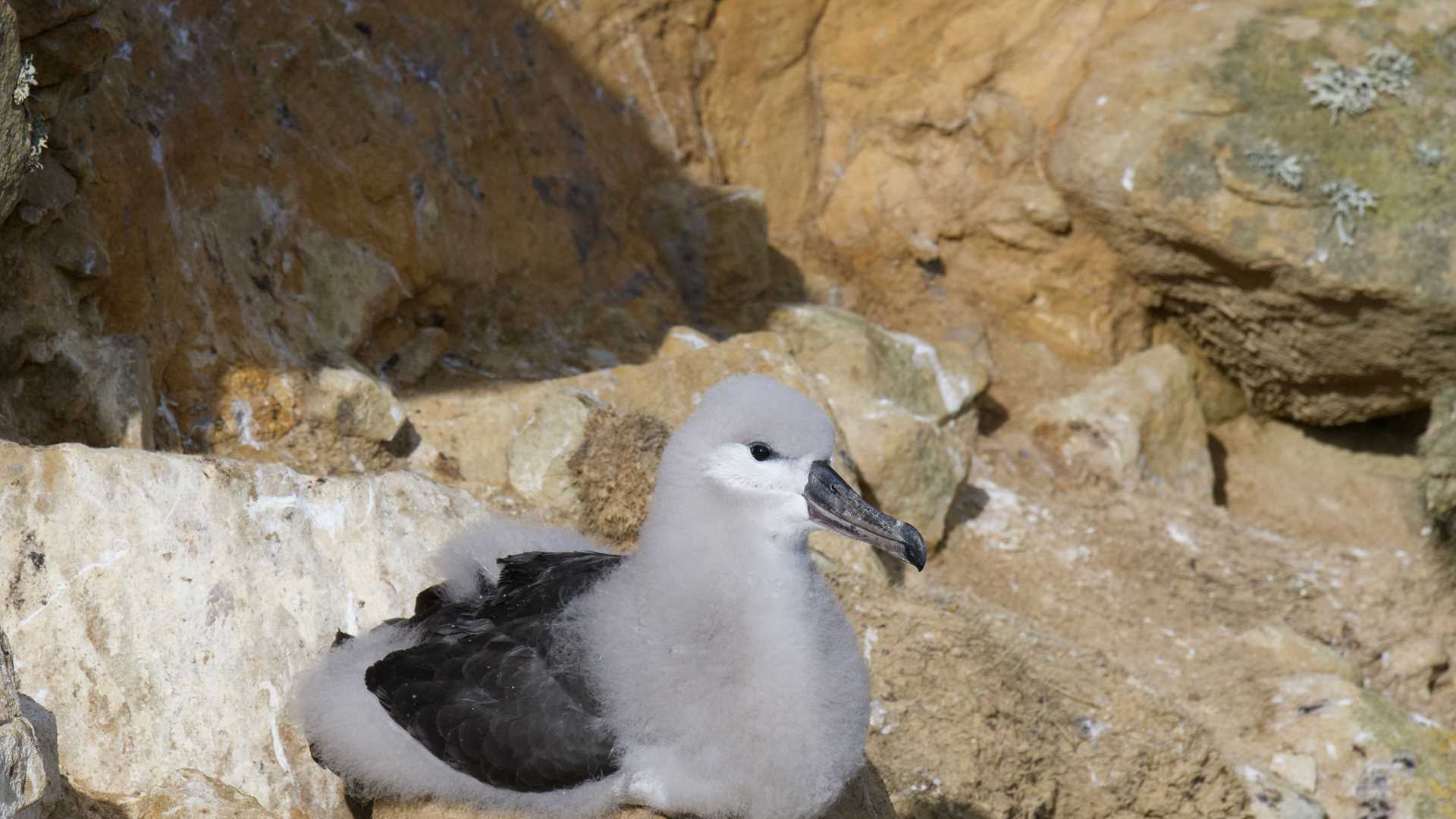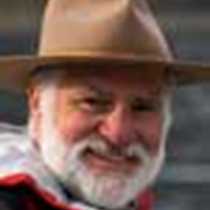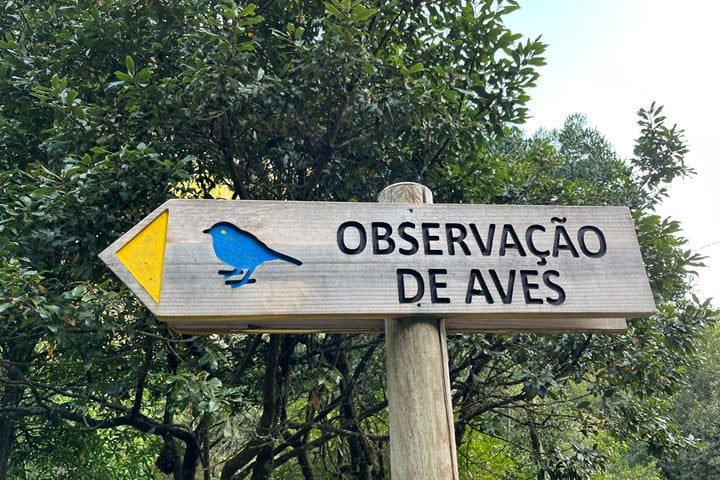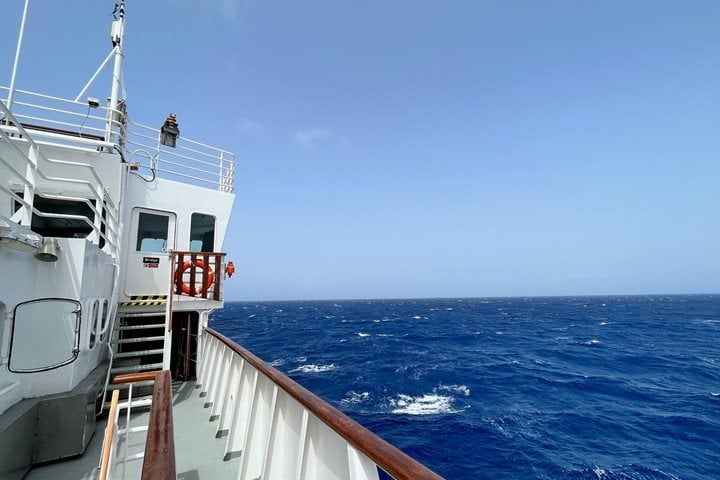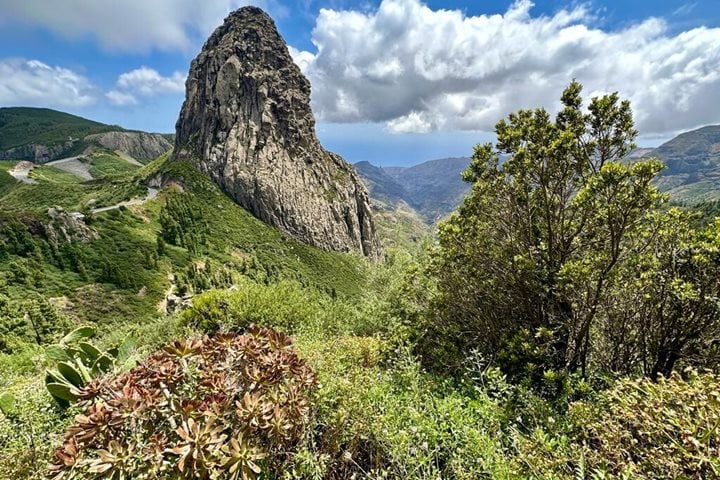Thanks to ideal conditions as the ship made her way from mainland South America to the Falkland Islands, we were able to spend a quiet night at anchor.
The new day greeted us under bright but overcast skies. In the distance, we could see the settlement on New Island. We observed birds around the ship and along the coastline.
Shortly after breakfast, we boarded our trusty Zodiacs and headed to our morning destination – the seabird colonies on the west shoreline.
In addition to a good number of elegant kelp geese, a few crested ducks, and Falkland Island flightless steamer ducks, several local folks greeted us. Accompanied by one of the naturalists, we headed off for the short walk across the island. We passed patches of gorse bushes along the way as well as upland geese, the less common ruddy-headed geese, elegant long-tailed meadowlarks, and several other passerines.
As we neared the impressive cliffs that are so characteristic of the islands to the west, we spotted black-browed albatrosses wheeling over the colony and heard the cackling sounds of rockhopper penguins. Off to the right, two bald patches of land were half-covered with good numbers of imperial cormorants.
When we actually got to the colonies, the air was sucked from us. We were aghast at the sight before us; we observed hundreds of rockhopper penguins and albatross chicks on the steep, bowl-shaped slopes plunging down to the sea below us.
Most of the penguins are going through their molting process. This is a stressful time for them as they shed all their feathers, the new set pushing out the worn, year-old coat. It is aptly called a catastrophic molt! Occasionally, we heard birds calling.
The gray albatross chicks sat aloof on their pedestal-like nests. They are slowly shedding their down feathers for their first coat of juvenile feathers that will soon be put to the test when they take their first flights in a few weeks. Every now and then, an adult circled the colony before alighting close to their chick. The two greeted each other, and the parent fed the hungry and demanding youngster.
Over the next hour or so, we were enthralled and thankful for the privilege of witnessing such a marvel.
We departed from New Island. Over the next few hours, we sailed north under good sea conditions. Along the way, we passed a good number of sei whales feeding in the rich waters. As we sailed between the narrow passage separating West Point Island from the large West Falkland, we spotted many marine mammals and birds.
During the afternoon, we visited a wonderful island called Carcass. In no time at all, we sped across the waters from the ship to the pier. Soon enough, we set off in different groups. The options included: a long hike, a beachcombing walk, a medium walk, and a photo walk. All options led to the same point, a wonderful tea on Carcass Island.
The walks were, as always, marvelous. Since this island is rat free, we had the opportunity to see a number of small songbirds, including the endemic Cobb’s wren.
The tea was sumptuous. The large dining room table has a bend in it, which may have been created by the hundreds of delicious teas enjoyed by the countless thousands of guests who have visited the island. As always Rob McGill, our host, welcomed us and chatted with us.
It has been a fantastic start to this epic expedition. Our appetites are thoroughly whetted for more adventures. Tomorrow, we visit Stanley.

